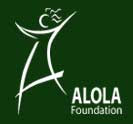'The state and development of adult learning and education in Asia and the Pacific'
>> 20090629
 Imagem: [PDF] The state and development of adult learning and education in Asia ...
Imagem: [PDF] The state and development of adult learning and education in Asia ...
The Pacific sub-region
"According to the EFA Monitoring Team’s categorisation, the Pacific sub-region comprises 18 countries: Australia, Cook Islands, Fiji, Kiribati, Marshall Islands, Micronesia (Federated States of), Nauru, New Zealand, Niue, Palau, Papua New Guinea, Samoa, Solomon Islands, Timor-Leste, Tokelau, Tonga, Tuvalu and Vanuatu.
Progress has been recorded for universal primary education, and most countries have high net enrolment ratios (NERs). Adult literacy data are not available for many of the small island countries; it remains a problem as indicated by some of the very few countries which had data. There are small gender disparities overall in the Pacific.
The total primary net enrolment ratio (NER) was 90 per cent in 2005, an improvement of three percentage points over 1999. However, the primary NERs declined by about three percentage points in Fiji and by two points in Samoa during the period and the Solomon Islands had a low ratio of 63 per cent.
There were still 335,000 out-of-school children at primary level in the Pacific region in 2005, compared to 447,000 in 1999, and the share of girls among out-of-school children increased from 50 per cent to 55 per cent. School progression and completion remain a concern in some of the few countries with relevant data. More than half the countries in the region have secondary school GERs at or above 85 per cent. However, there are large variations in the participation level in secondary education, with the GER ranging from 26 per cent in Papua New Guinea to 148 per cent in Australia. As in other sub-regions, GERs in over half the countries at the lower secondary level are higher by 30 percentage points or more than at the higher level. Notable exceptions to this are Australia, New Zealand and Tonga.
Adult literacy. Nearly 1.6 million adults in the Pacific region lacked basic literacy skills during the most recent period (1995–2004), compared with 1.3 million in the previous period (1985–1994). The estimated average adult literacy rate was 93 per cent in 1995–2004, only marginally different since 1985–1994. There are disparities among the countries which provided data; Samoa and Tonga had a rate of 99 per cent in 1995–2004, but the rates were 57 per cent in Papua New Guinea and 74 per cent in Vanuatu. Overall, very little gender disparity was reported, with some exceptions such as Papua New Guinea, where 80 adult women were literate for every 100 adult men who were literate.
Calculation of the Education Development Index and projection to 2015 for some of the measurable EFA Goals show that substantial challenges remain with regard to the learning needs of young people and adults. Given the pressure to extend the cycle of basic education in schools and expand secondary education, non-formal education opportunities have received lesser priority. The countries which have built up their formal primary and post-basic systems, such as Australia, Japan and New Zealand, have in fact, given systematic attention to non-formal life skills and lifelong education for youth and adults, especially at the postschooling level.[...]" (The State and development of adult learning and education in Asia and the Pacific: regional synthesis report; 2009, Pág. 19)
















0 comentários:
Enviar um comentário